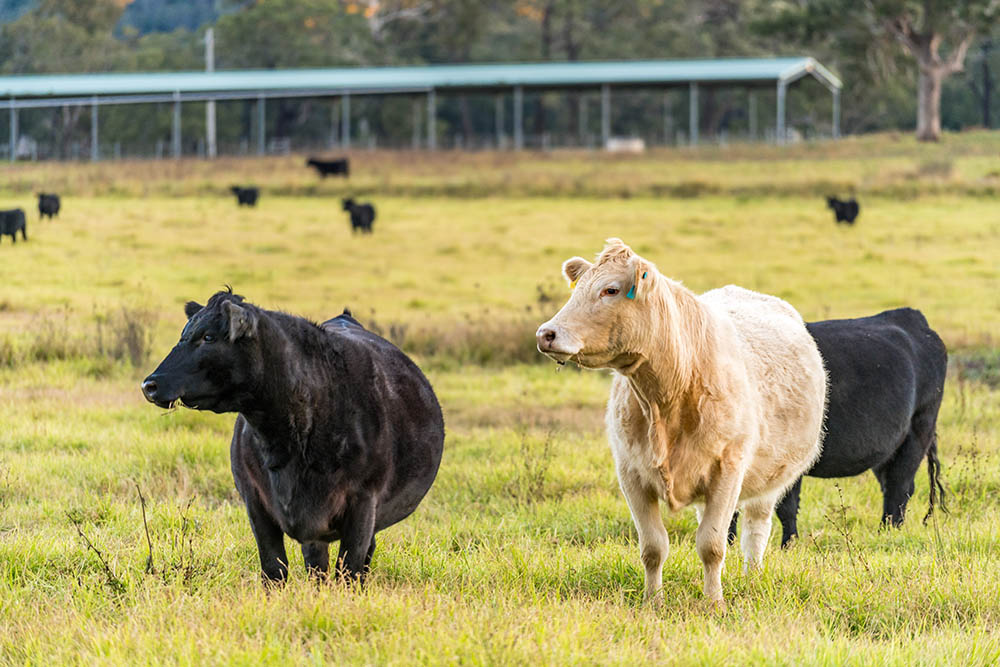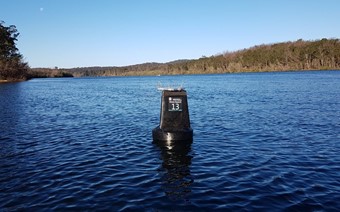Livestock
The seasonal conditions helped support the continued rebuilding of cattle herds and sheep flocks however, stock numbers, particularly for cattle, remained tight and, combined with historically high average prices, this meant that many producers were still unable to take full advantage of the feed available Beef production fell to a record low, driven by record low slaughter numbers as producers continued to prioritise breeding and restocking activities. With ample pasture production and a high proportion of cattle finished by feedlots, cattle carcass weights improved which partially offset the fall in slaughter numbers.
Prices for cattle remained at record high levels, supported by strong restocker demand. Sheep and lamb prices also remained historically high however he intensive poultry and pig meat industries faced more challenging operating conditions. Despite a large increase in domestic grain supplies as a result of two excellent cropping seasons, average feed prices trended up due to strong international pricing for grain. Pork producers struggled to increase prices due to greater import competition and lower exports as demand from China eased. Chinese domestic production increased following years of lower production due to African Swine Fever. Poultry meat also struggled to increase prices due to supply chain disruptions.
All livestock supply chains were impacted by labour shortages (albeit to differing degrees), which created bottlenecks across supply chains and constrained slaughter and meat processing capacities. This situation created immediate challenges for the pig and poultry meat sectors as retaining ready-for-sale stock is rarely a viable option. Whilst total throughout and stock supply was negatively impacted, the favourable seasonal conditions meant that the red meat industry was better equipped to cope with any excess stock.
Livestock Products
Outlook

Saleyard prices for cattle and sheep will remain historically high as the flock and herd continue to rebuild, driven by continued strong export demand for red meat however, prices are expected to ease over the medium-term as rebuilding momentum eases. Seasonal conditions in key competitor countries will also play an important role. Wool prices may fall in response to deteriorating global economic conditions as a contraction in real incomes decreases discretionary spending. A slower than expected recovery in milk production will continue to fuel competition from processors and farmgate dairy prices are expected to rise again despite softening global dairy prices.
Stronger Primary Industries Strategy
Climate Smart Pilots – Fisheries Pilot
The Climate Smart Pilots project aims to support farmers by piloting projects that build resilience in rural communities and primary industry sectors. The $6.7 million project has established practical trials with NSW farmers to understand how digital technology-use – through data collection and decision-making tools - can help in responding and adapting to climate change, and how adaptation strategies can assist primary producers to adapt to and better manage short term variability including extreme weather events or water resource management.
Strategic Outcome


Feature Pilot: Clyde River Oyster Fishery
Website: https://www.dpi.nsw.gov.au/dpi/climate/digital-agriculture/climate-smart-pilots/fisheries-pilot
Mounted on buoys bobbing away on the Clyde River are a series of marine-proof sensors with an important role. By measuring and reporting on water salinity and temperature, the sensors are helping to deliver valuable information on the environment to the estuary’s oyster farmers.
The Estuary Sensor Platform incorporates numerous environmental and marine IoT (Internet of Things) sensors. They include:
- floating salinity and temperature sensors mounted on buoys in the estuary channel and oyster harvest zones, which monitor changing water conditions;
- fixed salinity and temperature sensors, which monitor changes from tidal effects;
- temperature loggers for oyster farmers to place with their oysters to monitor and provide warning of extreme temperature events;
- and an automatic weather station, which provides accurate and timely data to farmers that is local to their oyster production zones. The platform also includes:
- centralised LoRaWAN gateways, which capture sensor data and upload it for farmers to access;
- a ‘backend’ or cloud-based system to store data; and
- an easily accessible dashboard for visualising and interacting with the data.
Why is the platform needed?
The Estuary Sensor Platform will better prepare the local oyster industry for both current and future climate events. Under a changing climate the future rainfall regime could shift considerably on the southeast coast of NSW. A key risk-factor is increased storm and rainfall intensity, leading to more frequent and larger pulses of fresh water through the Batemans Bay Estuary. Although rainfall is a welcome sight for many NSW farmers, for oyster farmers it needs to be monitored carefully. This is because flood events can damage oyster farming infrastructure and create conditions conducive to oyster mortality. The sudden and occasionally prolonged drop in water temperature, introduction of excess sediments and displacement of saline water creates a hostile habitat. Fresh water is a primary contamination source. When introduced to oysters it poses consumer health risks, and therefore, rainfall determines harvest closures. That means it is vital for farmers to track local rainfall as it occurs in preparation for any closures, potentially reducing losses.
With farmers’ only consistent Bureau of Meteorology (BoM) station more than 20 kilometres away, local, on-farm weather stations will provide much needed data. Sensors that log temperature are also important as they can tell farmers if a heat wave is occurring in their lease. This allows them to respond as required, again with the potential to reduce losses. The digital tools linked to the management of these water quality changes will better prepare the local industry. Feedback to date suggests that they not only save on labour, but also provide extra ‘peace of mind’ given the prospect of these shifts in climate extremes. This is particularly important for the area’s oyster farmers. Producers are already dealing with other factors such as the ongoing impacts of the 2019/2020 bushfire season and the effect of Covid-19 on their markets.
Production
With annual production worth more than $59 million, NSW oyster production plays an important economic role in the fisheries sector. Any improvements to this important fisheries sector through technology is beneficial to the wider community. The Platform uses the Batemans Bay Community LoRaWAN Network, which was jointly established by the Eurobodalla Shire Council and the NSW DPI.


